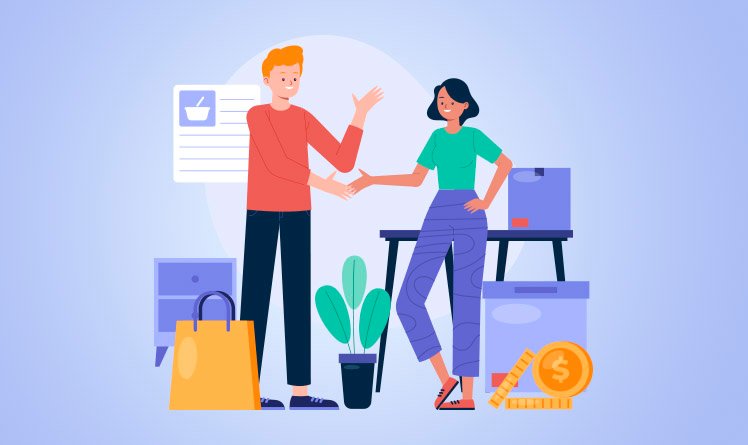NLP in sales: the secret to selling more and better

|
Getting your Trinity Audio player ready...
|
If you've ever wondered why some salespeople seem to have the "Midas touch," managing to persuade customers effortlessly, the answer may lie in Neuro-Linguistic Programming (NLP)This approach, created in the 1970s by Richard Bandler and John Grinder, explores how language and mental patterns influence human behavior. And when applied to sales, NLP becomes a true secret weapon.
Salespeople who master NLP understand how to create deep connections, influence decisions, and overcome objections more easily. But don't worry, this doesn't mean manipulating customers! On the contrary, it's about better understanding people's needs and helping them make the best decisions for them. Want to learn how? Then keep reading.
What is NLP
THE Neuro-Linguistic Programming (NLP) NLP is a set of communication techniques and models that study how thought patterns influence people's behavior and results. Created in the 1970s by Richard Bandler and John Grinder, NLP seeks to understand how successful people structure their internal experiences to achieve high levels of performance. Thus, the central idea is that by modifying the way we think and communicate, we can change our behaviors and improve our ability to influence and persuade others.
In the sales context, NLP becomes a powerful tool for creating deeper connections with customers, understanding their needs, and guiding them more effectively through the buying process. Thus, using techniques such as rapport, anchoring, belief restructuring, and persuasive linguistic patterns, salespeople can improve their communication, generate more empathy, and increase their conversion rates in an ethical and strategic manner.
The fundamentals of NLP applied to sales
NLP provides several tools to improve communication and persuasion. Key techniques include:
Rapport: How to Create an Instant Connection with Your Customer
Have you ever noticed how some people seem to “hit the saint” right away? This happens when there is rapport, a state of harmony between two individuals. Thus, in sales, quickly building rapport can be the difference between closing or losing a deal.
To do this, you can:
- Mirror the customer's body language and tone of voice (without exaggeration, so as not to seem artificial).
- Use words and expressions that the customer also uses, creating a feeling of familiarity.
- Demonstrate genuine interest and listen actively.
Modeling: Learning from the best salespeople
One of the assumptions of NLP teaches that, “If someone can achieve a desired result, anyone else can replicate it”, as long as it follows the same pattern. Therefore, one of the most powerful strategies is to study top salespeople and model their behavior.
Ask yourself:
- How do they start their conversations?
- How do you deal with objections?
- How do you lead the customer to “yes”?
If you identify patterns and apply them to your style, you can quickly increase your sales.
Submodalities: tailoring communication to each client
Each person interprets the world in a unique way, and NLP teaches us to adapt our approach to better connect with different types of clients. Thus, certain questions help identify the client's way of thinking. This is where the concept of submodalities:
- Visual: “Can you imagine what this product will look like in your office?”
- Auditory: “What do you think of what I’ve explained so far?”
- Kinesthetic: “How do you feel about this solution?”
By aligning your communication with your customer's style, you create a stronger connection and improve the shopping experience.
How NLP Influences Customer Behavior
The importance of representational systems
As mentioned, people process information differently (visually, auditorily, and kinesthetically). In sales, knowing how to identify and speak the customer's "language" can speed up the closing process.
The impact of beliefs and values on decision making
If a client believes something won't work for them, they're unlikely to change their mind with logical reasoning alone. Therefore, NLP teaches how to identify and restructure limiting beliefs to remove barriers to purchase.
Anchoring: How to Awaken Positive Emotions
Anchoring is a technique that associates a stimulus with an emotional response. For example, when talking about a benefit of your product, associate it with a positive feeling, such as security or happiness.
Practical NLP techniques to increase your sales
Mirroring: Creating Harmony
Observe the customer's posture, tone of voice, and pace of speech and adjust yours to create empathy.
Pacing and Leading: Conducting the Negotiation
First, get into the client's rhythm (pacing) to gain their trust. Then, gently lead them to the purchasing decision (leading).
Restructuring limiting beliefs
If a customer says, “This product is too expensive,” you can reframe that belief by asking, “If this investment yielded a high financial return, would it still seem expensive?”
Powerful questions
Open-ended, well-formulated questions help guide the client:
- “What is most important to you when choosing a product like this?”
- “What would make this solution perfect for you?”
NLP and Persuasion: How to Sell Ethically and Effectively
The difference between persuasion and manipulation
Persuasion involves helping a client make a good decision. On the other hand, manipulation involves deceiving them. Thus, NLP teaches ethical persuasion, where both parties benefit.
Creating irresistible messages
Use NLP linguistic patterns to make your message more compelling:
- Embedded statements: “Can you imagine how much better your life will be with this solution?”
- Assumptions: “Once you start using this service, you will notice the difference quickly.”
How to use metaphors and storytelling
Stories activate the emotional brain and make the message more impactful. Instead of listing features, tell a real-life story from a satisfied customer.
In short…
NLP isn't magic, but it can feel like it. By understanding how people think, feel, and make decisions, you become a more influential, empathetic, and effective salesperson. So, if you want to sell more, start applying the techniques you learned here and see the results in practice.
Recommended reading:
Image: Freepik

Marcel Castilho is an expert in neuromarketing, neuroscience, mindfulness and positive psychology. In addition to being an advertiser, he also has a Master's degree in NLP – Neurolinguistic Programming. As the owner and founder of the communications agency VeroCom and also of the digital agency Vero Contents, he has been studying human behavior for over 30 years.



